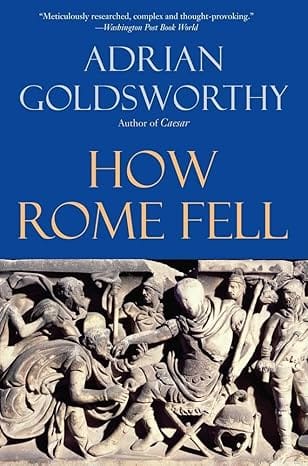The Long View 2003-11-03: Dubious Trends
You can make your own conclusions regarding these trends twelve years later.
Dubious Trends
About 15 years ago, I wasted the time of the senior executives of a major law-publisher I worked for with memos insisting that they absolutely had to start a newsletter dealing with the regulatory implications of the Greenhouse Effect, because that was going to be the environmental issue of the 21st century. Wisely, as things turned out, they decided to wait until the 21st century before bringing out publications for the 21st century's markets. However, not every institution was so cautious. The world was soon well-supplied with "climate-change" study centers, all of which have a vested interest in climate change. Similarly, businesses began financing "centers" and scholars of their own, whose purpose in life is to question any evidence for a man-made Greenhouse Effect. So much money and institutional power is involved in the Global Greenhouse issue that you have to look with suspicion on any flurry of news stories on the subject.
That said, though, I could not help but notice all the recent headlines, like this one from the National Post:
Kyoto debunked: A pillar of the Kyoto Accord is based on flawed calculations, incorrect data and an overtly biased selection of climate records, an important new paper reveals.
The article, by Tim Patterson, gloats a little in what some people might think an unseemly fashion. He begins by telling us this "has been a nightmare of a year for aficionados of the Kyoto Accord. After Canada's ratification of the treaty in late 2002, environmentalists had every reason to believe that few climate experts would dare continue to publicly oppose Kyoto's science, Russia would quickly ratify the accord and it soon would become international law." The politics, he notes, has not worked out as the Greenhouse aficianados hoped. His chief point, though, is that the science may be unraveling. It seems that a recent paper suggests that the strongest argument for a Greenhouse "smoking gun" does not withstand scrutiny:
Toronto-based analyst Steve McIntyre and University of Guelph economics professor Ross McKitrick, obtained the original data used by Michael Mann of the University of Virginia to support the notion that the 20th-century temperature rise was unprecedented in the past millennium. A detailed audit revealed numerous errors in the data. After correcting these and updating the source records they showed that based on Mann's own methodologies, his original conclusion was flawed.
The world's climate has been warming of course, but more scientists are inclined to look to changes in solar output for at least part of the explanation. This relatively sanguine story from ITV tells us:
Soothed sun to help climate crisis: The Sun appears to be calming down after a 100-year storm, and the change could help counteract the effects of global warming.
It seems that a study led by Dr. Mark Clilverd for the British Atlantic Survey says that, over the next century, "Sunspot numbers are expected to fall by 60 per cent from around 80 per month to 35, and geomagnetic storms are predicted to reduce by a similar extent, from an average 40 per year to about 13."
That might be comforting, were it not for the fact at least one other study, published in Science, draws the opposite inference from the same cause:
Cyclical, natural variations in the sun's intensity added to man-made factors could make global warming worse than has been anticipated. That's one implication of a study by University of Illinois researchers and colleagues of the environmental changes recorded in the sediment of an Alaskan lake over the last 12,000 years. "If it's verified everywhere, it puts the society in a much more precarious position," said Feng Sheng Hu, a UI plant biology and geology professor and lead author of the study....
One happy result of this controversy will be that climate scientists and solar astronomers will continue to be splendidly supplied with grant money for the foreseeable future. On the other hand, all this talk about the instability of the sun makes me unhappy. Arthur C. Clarke wrote several stories based on the premise that the really big news of the 21st century will be the discovery that the sun is about to go off the main sequence. It's hard to see how that could happen, of course. He was just making it up. Surely.
* * *
On the subject of imaginary trends, I see that an increasingly prominent theme in the campaign to redefine marriage to include homosexual liaisons is the notion of historical inevitability. Readers are doubtless familiar with Edmund Wilson's famous study of the the revolutionary tradition, To the Finland Station. It is hard to believe now just how strong the myth of ultimate Communist victory was in the 20th century, not least among Communism's opponents. The saying was, "The armies of socialism march only one way," and that was true: until the invasion of Grenada in 1983, no country where Communism had become established had ever reverted to capitalism, either by counter-revolution or invasion. What we are being treated to now is pretty much the same model applied to sexual politics, except that the Finland Station is located in Canada.
None of this actually works on close inspection. For instance, consider the often-heard analogy that homosexual marriage simply extends the principle of allowing marriage between members of different races. The problem with this is that race is extrinsic to the institution. As a rule, laws relating to matrimony, including the law in most of the United States, took no notice of race. The law everywhere and forever, however, has defined marriage in heterosexual terms. That's what the institution is. It's an essential feature that does not change over time.
There are real historical trends at work here, but not the ones that are usually mentioned. Starting in the late 1950s and extending into the 1980s, marriage in the United States, at least, began to revert to the relaxed form it had two centuries ago. In the 18th century, many people did not trouble to get married in a way that the law would enforce (partly because divorce was almost impossible). Couples broke up. Children were neglected. They took to opium. The crime rate soared. Then the busybody Victorians came along with their reforms and set society on a trajectory of increasing social order that peaked in the middle of the 20th century.
In the 1980s, the trend toward relaxation reversed again. All the indicators of family stability either improved or stopped getting worse. The movement for gay marriage should be seen as a reaction to these developments. If the institution of marriage must make a comeback, some graying babyboomers are saying, then at least it will come back as something else. Such a transformation is probably beyond the range of sustainable human societies, so the attempt to transform culture will peter out. However, the ultimate futility of this campaign in no way excuses us from hearing about it day after day after day.
* * *
On the subject of things bound for the dustbin of history, let us not neglect the new parish church that was recently opened in Rome, Dives in Misericordia. Designed by the well-meaning but totally clueless New Yorker, Richard Meier, this "striking Modernist structure" is built "around three soaring 'sails' of white concrete." Actually, it looks like one of those clear-plastic vegetable choppers that are sold on late-night TV.
This class of International Style structure has undermined the faith and deadened the aesthetic sense of Catholics for 40 years. Everyone knows that they are a disaster, except the liturgical experts who commission them. Happily, this is another trend that is reversing; an intelligent revival is underway of historical styles. That is why the only thing more appalling than the church of Dives in Misericordia itself is the fact it was built in Rome, the pope's own archdiocese. There are people in the Vatican who know better.
* * *
Regarding God, the BBC notes that the American ABC network is planning to broadcast a program exploring a theory that suggests Christ had a wife and a child:
ABC's Elizabeth Vargas said Jesus, Mary and Da Vinci, to be shown in the US on Monday night, was being made "as respectfully as we can".
But she admitted: "You can't talk about this subject without intriguing people or offending people."
The programme is partly based on the best-selling novel The Da Vinci Code.
The book alleges Mary Magdalene - a biblical figure widely thought to have been a prostitute - was actually Jesus's wife
Frankly, this sounds more like a book-promotion than anything else. To the slight extent the matter needs a reply, I commend the attention of readers to R.A. Lafferty's inspired novel, Past Master. For reasons which might take a little explanation, in that book Thomas More is transported 500 years into the future (500 of our future; 1000 of his) to the center of human civilization, a planet called Golden Astrobe. There he becomes a Christ-figure in a historical crisis. By and by, he is sentenced to be executed, as you might expect. His followers, including the most beautiful woman of Astrobe, plot to release him:
"Can one of you get to the Thomas to tell him not to worry, that it is all taken care off?"
"Oh, I'll get to him, Evita said. "A wink to the Programmed guards, who have minds like adolescents, and I'm in. They think I'm his doxie, and they have a leering love of such things."
"Programmed guards": Lafferty was a prophet.
* * *
Finally, I would like to thank those of you who have been buying your books through this site. Even more thanks are due to those who have been buying my books, through whatever medium. I am grateful and flattered.
Copyright © 2003 by John J. Reilly

Past Master By R. A. Lafferty



Comments ()